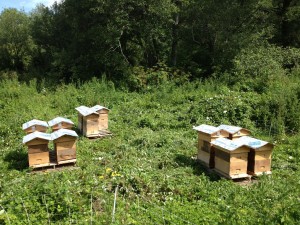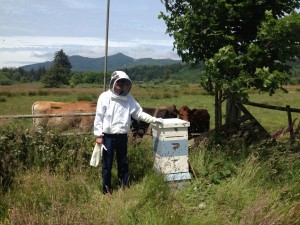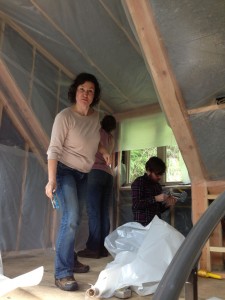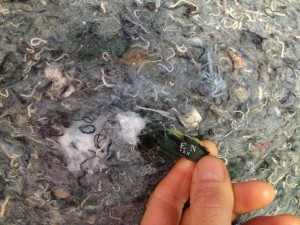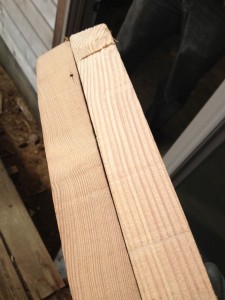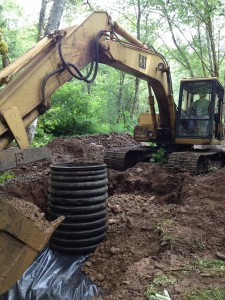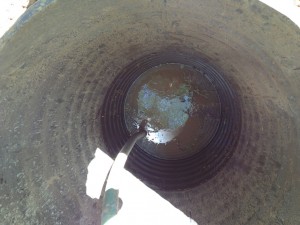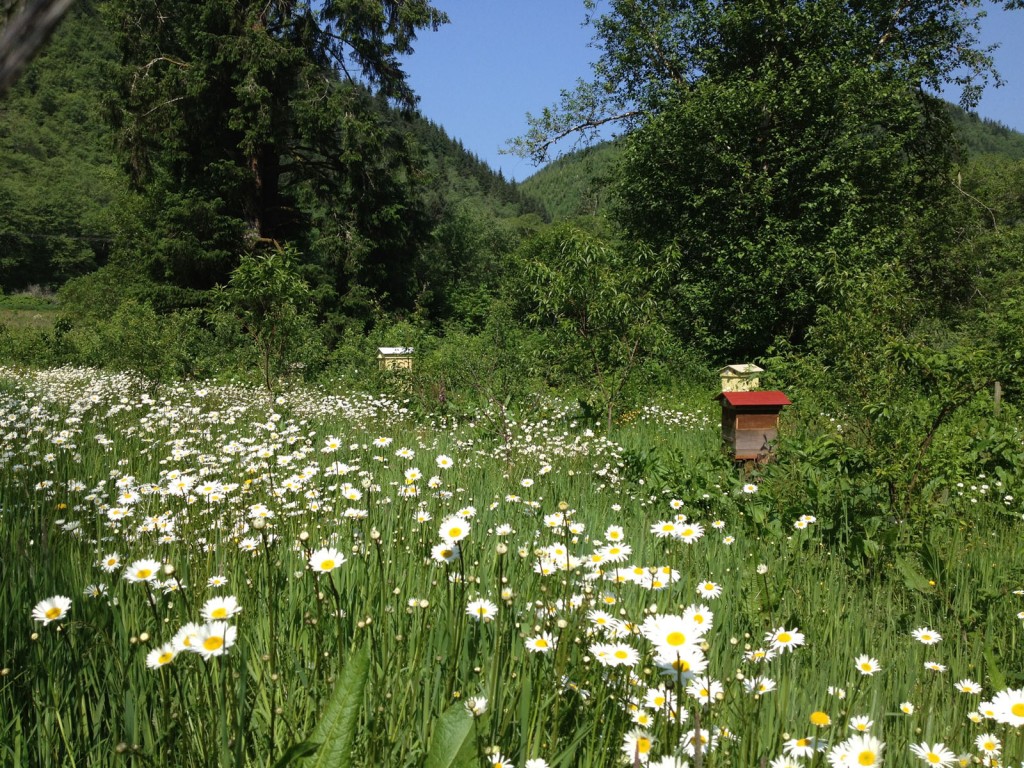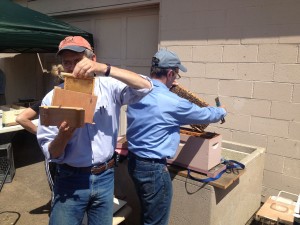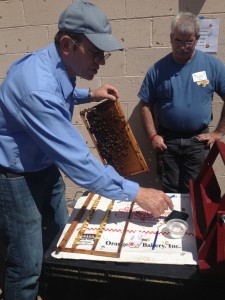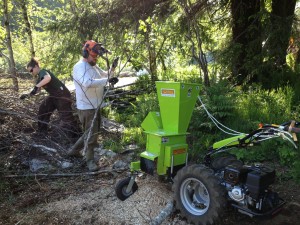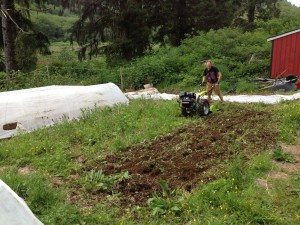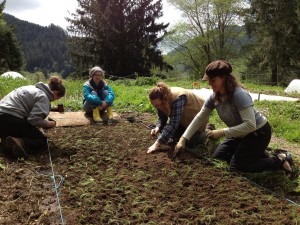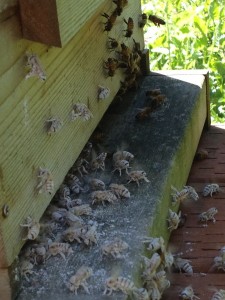A lot of things have been going on in the last few weeks; so many that I not only haven’t been posting, but I haven’t even known what day of the week it was. Most of these happening have been regarding the house.
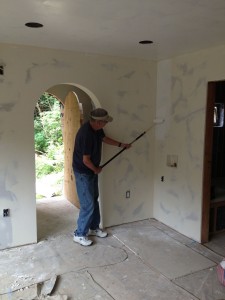 First off, we finally hired a contractor to do a part of the work. Not a BIG part, mind you, but as Emily pointed out, at this point it makes sense to hire some folks where we can, to speed up the schedule. In this case, we’re talking about drywall. I can do drywall, but the reality of it is that a pro can make it look twice as good and do it in a fifth the time. A local drywaller came particularly well recommended, and he’s done a fabulous job for a very reasonable price. Suddenly, we have drywall! The person you see in the picture, however, is not the drywaller. It’s my dad! My parents came for their annual pilgrimage, spreading cheer and good times. Dad spent some time with me at the house; it’s always fun to work and chat with Dad.
First off, we finally hired a contractor to do a part of the work. Not a BIG part, mind you, but as Emily pointed out, at this point it makes sense to hire some folks where we can, to speed up the schedule. In this case, we’re talking about drywall. I can do drywall, but the reality of it is that a pro can make it look twice as good and do it in a fifth the time. A local drywaller came particularly well recommended, and he’s done a fabulous job for a very reasonable price. Suddenly, we have drywall! The person you see in the picture, however, is not the drywaller. It’s my dad! My parents came for their annual pilgrimage, spreading cheer and good times. Dad spent some time with me at the house; it’s always fun to work and chat with Dad.
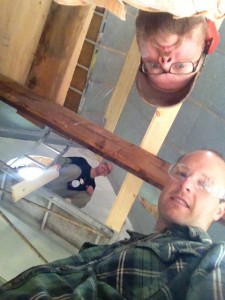 Dad and mom weren’t the only visitors this month. My dear friend Brian came the very next week, after dropping his family off at summer camp. Here we see Brian and Ryan helping me install the knotty pine ceiling. I must say, it looks GREAT! I’m so pleased. The three of us working at the same time made the job go really quickly, and it was fun, too. Working on projects with my friends is one of my all-time favorite things to do in life. Let the good times roll.
Dad and mom weren’t the only visitors this month. My dear friend Brian came the very next week, after dropping his family off at summer camp. Here we see Brian and Ryan helping me install the knotty pine ceiling. I must say, it looks GREAT! I’m so pleased. The three of us working at the same time made the job go really quickly, and it was fun, too. Working on projects with my friends is one of my all-time favorite things to do in life. Let the good times roll.
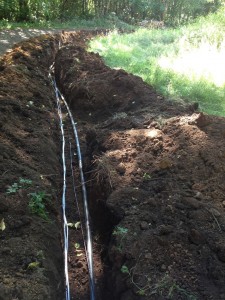 A few days after Brian left, Emily and I popped up to the house to check out the new ceiling. We were in “nice” clothes, and not planning on working (or even getting dirty) so imagine my surprise when I saw that our friend Dick was on site, digging the utility trench I asked him to dig a few months ago. Wow, is our yard a mess! Even more than normal, I mean. But now that the trench is in, I spent half the day filling it with the various things that span the 500 feet between the well and the house. In this case, that’s a 1-1/2″ HDPE water pipe, a #8 UF copper conductor (240 volts, for the pump electricity), a #6 UF copper conductor (120 volts, for the shop circuit), and a CAT6 direct-burial, full copper ethernet cable. Heh. One annoying thing I did learn is that a 500′ spool of pipe and a 500′ spool of wire are NOT the same length. I don’t know how that could be, but I came up about 20 feet short on the wire, which is annoying as now I have to do a special waterproof splice to add more on. And what am I going to do with 40′ extra of HDPE pipe?
A few days after Brian left, Emily and I popped up to the house to check out the new ceiling. We were in “nice” clothes, and not planning on working (or even getting dirty) so imagine my surprise when I saw that our friend Dick was on site, digging the utility trench I asked him to dig a few months ago. Wow, is our yard a mess! Even more than normal, I mean. But now that the trench is in, I spent half the day filling it with the various things that span the 500 feet between the well and the house. In this case, that’s a 1-1/2″ HDPE water pipe, a #8 UF copper conductor (240 volts, for the pump electricity), a #6 UF copper conductor (120 volts, for the shop circuit), and a CAT6 direct-burial, full copper ethernet cable. Heh. One annoying thing I did learn is that a 500′ spool of pipe and a 500′ spool of wire are NOT the same length. I don’t know how that could be, but I came up about 20 feet short on the wire, which is annoying as now I have to do a special waterproof splice to add more on. And what am I going to do with 40′ extra of HDPE pipe?
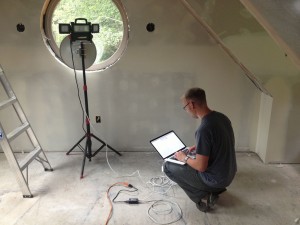 We’re also working on our internet solution. The cable company wanted $4000 to bring internet to the house. After a “yikes” moment, I calmed down and set up a meeting with their project coordinator. As I guessed, they thought I wanted them to bring it all the way to the house, about 1000 feet from the road. When they found out all I wanted was a connection right at the pole, the said they could install it for free. This is the part where Michael, one of my most tech-savvy friends, comes in. Besides working deep within the tech.geek.kindom of F5 in Seattle, he also has a passion for wireless remote telecommunications. Interesting hobby, to be sure, but REALLY HANDY if you have a thousand-foot driveway and need to get internet. Here we see Michael testing signal strength on a directional gigahertz-band internet antenna set up temporarily in our house (it will be outdoors in the final install). It beams data back and forth from a sector antenna set up at a remote station down by the road. Pretty sweet, and a lot less than $4000. He’s coming back in late September to work on it some more.
We’re also working on our internet solution. The cable company wanted $4000 to bring internet to the house. After a “yikes” moment, I calmed down and set up a meeting with their project coordinator. As I guessed, they thought I wanted them to bring it all the way to the house, about 1000 feet from the road. When they found out all I wanted was a connection right at the pole, the said they could install it for free. This is the part where Michael, one of my most tech-savvy friends, comes in. Besides working deep within the tech.geek.kindom of F5 in Seattle, he also has a passion for wireless remote telecommunications. Interesting hobby, to be sure, but REALLY HANDY if you have a thousand-foot driveway and need to get internet. Here we see Michael testing signal strength on a directional gigahertz-band internet antenna set up temporarily in our house (it will be outdoors in the final install). It beams data back and forth from a sector antenna set up at a remote station down by the road. Pretty sweet, and a lot less than $4000. He’s coming back in late September to work on it some more.
There is a lot of other happenings on the house as well, too much to tell. But we’re working hard to get moved in before October, so please be patient if you don’t see a lot of posts in the next few weeks.

